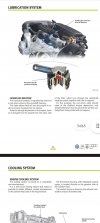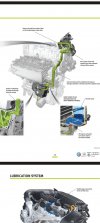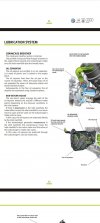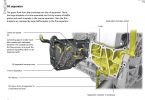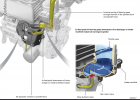Hi Lozzy15, i'm not sure of what unit you mean, but yes that is the exact fitting i was talking about.Thanks for the info, have you got a part number for that unit? Having had a look I can only assume that this connects to the connection marked red on this picture?
View attachment 24439
Oil Catch Can Fitting Guide - 1.4Tsi MK3 Leon
- Thread starter Lozzy15
- Start date
You are using an out of date browser. It may not display this or other websites correctly.
You should upgrade or use an alternative browser.
You should upgrade or use an alternative browser.
Hi Lozzy15, i'm not sure of what unit you mean, but yes that is the exact fitting i was talking about.
That pipe looks like quite a pain to get to! How much junk would you say your can is collecting for x amount of time? The one I have fitted gets about a 1/3 full over the course of a month just from the system I've hooked up to collect so would be interesting to see what a connection to that pipe collects as well.
Hello @Lozzy15 , i want to install one catch can in my car, but my car has 1.0 TSI Engine EA211, i saw my engine has a vent hose from valve cover to turbocharger like your engine.
The amount of oil/residuos in the discharge pipe and throttle body has decreased after your catch can installation?
The oil catch can that you used in your car has any special characteristic for this kind of engines, or any catch can could works fine?
Greets from Mexico.
Best Regards
Alejandro Ortiz
The amount of oil/residuos in the discharge pipe and throttle body has decreased after your catch can installation?
The oil catch can that you used in your car has any special characteristic for this kind of engines, or any catch can could works fine?
Greets from Mexico.
Best Regards
Alejandro Ortiz
Hi,Hello @Lozzy15 , i want to install one catch can in my car, but my car has 1.0 TSI Engine EA211, i saw my engine has a vent hose from valve cover to turbocharger like your engine.
The amount of oil/residuos in the discharge pipe and throttle body has decreased after your catch can installation?
The oil catch can that you used in your car has any special characteristic for this kind of engines, or any catch can could works fine?
Greets from Mexico.
Best Regards
Alejandro Ortiz
The catch can I used was just a generic one from eBay with appropriate sized fitting. I haven't checked the actual lines on the engine for residue but since fitting the can in place I have had to empty it several times with quite a large amount of gunk having been collected by it so it is certainly doing something!
This is what i get in a week:That pipe looks like quite a pain to get to! How much junk would you say your can is collecting for x amount of time? The one I have fitted gets about a 1/3 full over the course of a month just from the system I've hooked up to collect so would be interesting to see what a connection to that pipe collects as well.
Thanks Mate, I already have installed an oil catch can on my 1.0 TSI, as your guide indicates, and works so fine. i have driven around 400km and the catch can has collected a good amount of oil and gunk.Hi,
The catch can I used was just a generic one from eBay with appropriate sized fitting. I haven't checked the actual lines on the engine for residue but since fitting the can in place I have had to empty it several times with quite a large amount of gunk having been collected by it so it is certainly doing something!
Best Regards
Alejandro Ortiz
I'm sorry to say you guys that this is not how you fit an oil catch can on this engine, if you fit the oil catch can the way you did you are only catching the blow by from the head and not from the crankcase, which is where the vast majority of the blow by is!
The EA211 family is equipped with a PCV system fitted on the block underneath the air intake manifold they then have an hose that goes from the PCV directly to the air intake manifold, you can see better from the image below:
View attachment 24381
To install an oil catch can on EA211 engines you have to get rid of the stock hose (Nr.1 in the diagram) and connect an hose that goes from the PCV to the inlet port of the oil catch can, you then connect another hose that goes from the outlet port of the oil catch can to the hose fitting located on the under side of the air intake manifold, you can see better from the image below:
View attachment 24382
I have personally installed it this way, and believe me i do catch a lot of nasty oil.
Metter of fact if i unplug the dipstick from the catch can with the engine running i can see vapours flowing out!
Hope this helps!
Sorry for reviving something old, but this is super relevant.
So what we can conclude here is that 2 catch cans are actually best?
One for the cam-to-turbo ventilation as Lozzys original guide refers to, and one for the crank ventilation that is hidden below the intake manifold?
Interesting which one is worse
Sorry for reviving something old, but this is super relevant.
So what we can conclude here is that 2 catch cans are actually best?
One for the cam-to-turbo ventilation as Lozzys original guide refers to, and one for the crank ventilation that is hidden below the intake manifold?
Interesting which one is worse
It would be interesting to see the difference. I only have the one as shown in the guide and it gets fairly full and has to emptied around once a month. I think you could probably plumb it all into one catch can if you were to do the lower one too, using some one way valves to ensure no issues arise from linking up the breathers.
There you guys hope that sorts it out if this is still relevant too U as it's an old post
Attachments
Yes, of course there is, every modern internal combustion engine except a 2-stroke will have and definitely needs an air/oil separator.I was just reading that today and saw this thread ... there's already an oil separator attached to the engine itself ...
Yes, I understand that, I was more querying the need. I had a borescope in my engine (EA111) when the plug were out and even at 135k there was no build up on the intake valves, which I was expecting due to the direct injection. I understand that on some EA888 engines, namely the 1.8 and 2.0L this can be a significant problem. I also understand that running at the max envelope (boost, timing, etc...) can cause issues, but with the stock tune even after 130k miles, I didn't see much of an issue, or enough of one to warrant additional failure points on the car.Yes, of course there is, every modern internal combustion engine except a 2-stroke will have and definitely needs an air/oil separator.
I'm simply building the database as I'm somewhat new to the VAG engines (a Honda/Toyota man in the states) and especially new to the EA211 engine family.
Thanks for your commentary as I can build my knowledge base.
You were looking at the wrong side of the valves! The problem is on the back of the valves in the intake manifold, not on the valve faces inside the cylinder.I had a borescope in my engine (EA111) when the plug were out and even at 135k there was no build up on the intake valves, which I was expecting due to the direct injection.
Yeah, I can see both sides quite easily on the 8V CBZB headYou were looking at the wrong side of the valves! The problem is on the back of the valves in the intake manifold, not on the valve faces inside the cylinder.
8V, just like old "2.SLOW" as they/we say in the states.
but I admit, I should take the intake manifold off, I'm sure it's full of coolant from the "charge cooler" anyway.
Last edited:
I've yet to see a high mileage direct injection engine that doesn't have carbon build up! You might not be able to see it from inside the cylinder, but unless it's already been cleaned at some point, then you can almost guarantee that it will have a build up around the ports, valve stems and inside the manifold. You only have to have a catch can fitted for a while to see the amount of crap it fills up with.Yeah, I can see both sides quite easily on the 8V CBZB head
8V, just like old "2.SLOW" as they/we say in the states.
but I admit, I should take the intake manifold off, I'm sure it's full of coolant from the "charge cooler" anyway.
cool. I'll snap a photo next plug change at 175k. I'm sure that it was present, but didn't look any different than any used intake valves on my non-DI engines. I'm a scientist, but this is a non-scientific analysis ... just a visual inspection where everything looked in order.I've yet to see a high mileage direct injection engine that doesn't have carbon build up! You might not be able to see it from inside the cylinder, but unless it's already been cleaned at some point, then you can almost guarantee that it will have a build up around the ports, valve stems and inside the manifold.
I was quite surprised. similarly with the overall reliability of the EA111 engines (water pumps aside).
I really should get a look through the intake and look for a ring around the valve stem. I really couldn't see that inside the cylinder, so you're probably right.
In fact it's the same system, the first one of Lozzys is secondary system activated when the pressure is too high the primary one is when pressure is low and it evacuate oil vapors from pcv directly to the air intake manifoldSorry for reviving something old, but this is super relevant.
So what we can conclude here is that 2 catch cans are actually best?
One for the cam-to-turbo ventilation as Lozzys original guide refers to, and one for the crank ventilation that is hidden below the intake manifold?
Interesting which one is worse
Similar threads
- Replies
- 0
- Views
- 1K
- Replies
- 0
- Views
- 1K
- Replies
- 7
- Views
- 3K
- Replies
- 12
- Views
- 4K


